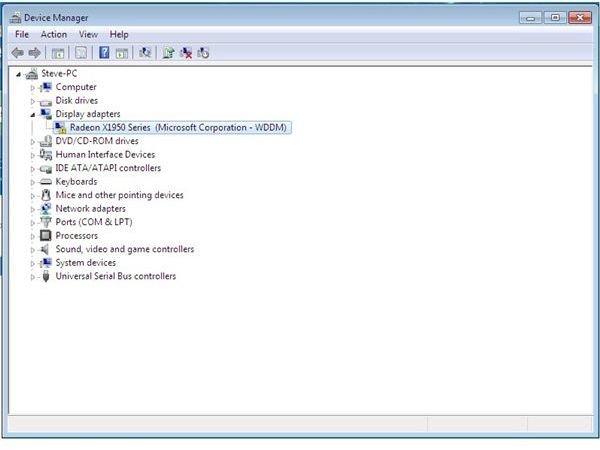Removing a Problem Driver - How to Uninstall Drivers
Update mistake?
Nothing is worse than doing the annual computer maintenance and discovering something has gone wrong. Problem drivers are sometimes a viable culprit when updating a device or software program, but luckily removing the problem driver isn’t very hard and depending on the device or program, there may be alternate drivers that can be used.
Problems & Removal
There can be many reasons why a driver fails to either install or work for the specified program. Perhaps it was downloaded incorrectly or there was an interruption while it downloaded; perhaps the file itself was not uploaded on the site correctly; or maybe, there is an issue that the manufacturer had not encountered until their customers began to use the driver.
For whatever reason, when the user tries to install or use the driver, an error message may appear that says the driver isn’t working correctly. Sometimes a message won’t show up at all, but the program fails to work. This is when removing the driver may revert the program or device back the previous working conditions.
To remove a driver, you will need to go to the operating system’s program that handles all the devices on the computer. For this example, let’s use the platform of Windows 7 and it’s Device Manager. The Device Manager is also included in earlier versions of Windows. Here are the steps depending on which version of Windows is running.
- Windows 98/2000/XP - right click on My Computer. It may either be on the desktop as an icon or listed within the Start menu. Once clicked, select ‘Properties’, which is listed at the bottom. This will open a new text box; select the ‘hardware’ tab. Within the hardware section, in the middle, is the option to open the Device Manager. Click on that button.
- Windows Vista/7 - Click on the Start button. While users can use the method above, the easiest way is to just type ‘device manager’ within the search area within the start menu. It will appear at the top of the selection; just select it.
The device manager will open and show the listings for all the devices that are connected to the computer. The types of devices are listed under their device name; for example, opening the monitors selection will show the type of monitor that connected (example: Dell E1920). If you know the problem device (like a graphics card), locate it from the list. Sometimes, if the computer notices that the driver is not installed, there will be a question mark next to the device.
When you have found your device, right click on it. There will be several options listed; choose the ‘properties’ listing. This will pop up a box that has information about the device.By clicking the ‘Driver’ tab, you can see information about that driver. In most cases, there will be an option to ‘rollback’ the driver. Do this to rollback to the previously installed driver.
If this is the first time you’ve installed a driver for the device, you can select ‘uninstall’. Follow the directions to uninstall the driver. Then you’ll be able to reinstall the driver again. You can also right click on the device to display the earlier options and then choose ‘uninstall’.
Alternatives
As mentioned, it is not uncommon to have problems with a device driver. For some devices and programs, they will be unable to work unless there is a driver associated. But how do you associate a driver that’s not working?
The best way is to find alternative drivers. First, check the manufacturer’s website to see what issues are present with the current driver and if there are other drivers that can be used or if a previous driver will work. Other times, users with a similar problem have found alternate drivers that work with the device. Be sure to read over any issues that arises from those drivers, as they may be incompatible.
Having a problem driver can cause a bit of frustration, but luckily removing a problem driver isn’t hard and sometimes it’s just a matter of waiting for the next update or a response from the manufacturer.
